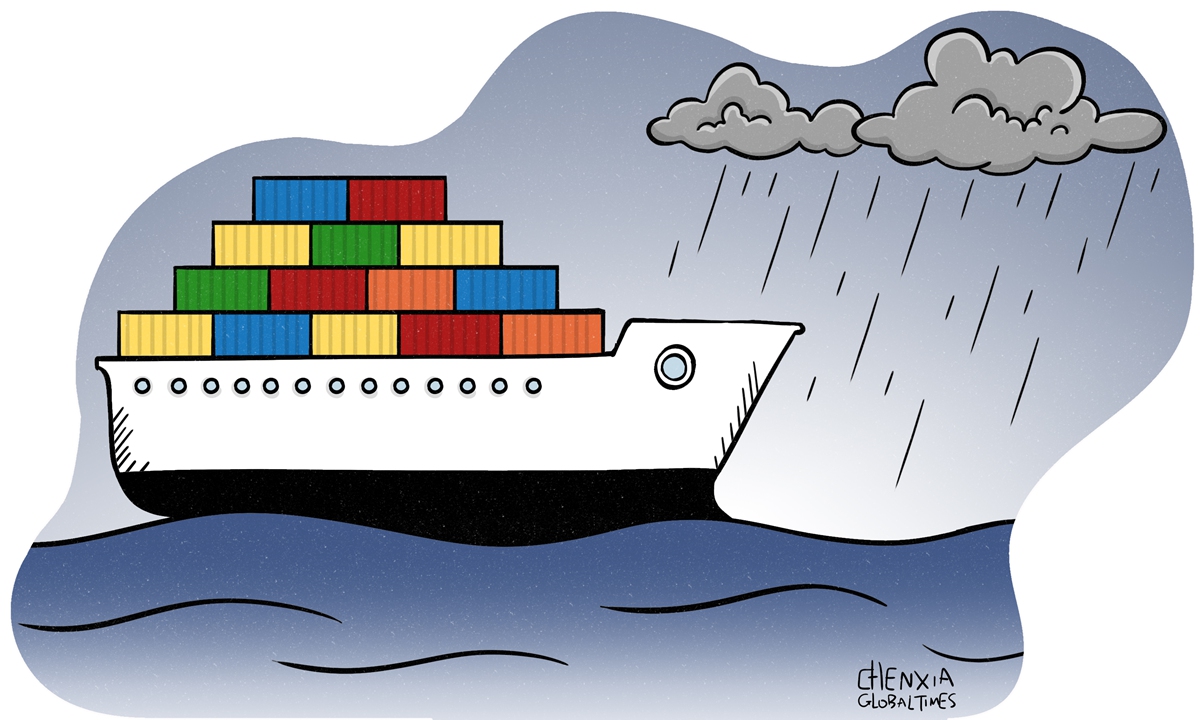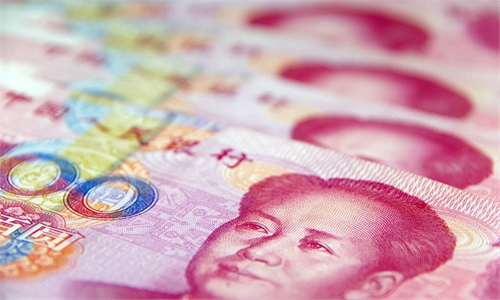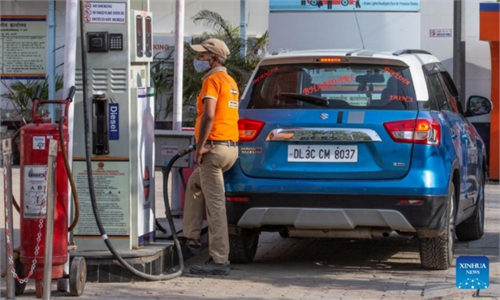
Illustration: Chen Xia/Global Times
India's merchandise trade deficit hit a fresh high of $25.63 billion in June as high global commodity prices raised the import cost of oil and coal. Given India's heavy dependence on imported energy products, the emerging economy was hit harder than many expected amid a looming global energy crisis.India, which depends on imports to meet more than 80 percent of its crude oil needs, is grappling with global energy price spikes. According to the Press Trust of India (PTI) news agency, India's crude oil imports in June soared 94 percent to $20.73 billion, propping up India's total imports to $63.58 billion, an increase of 51 percent from the year-ago level. A direct result is that trade deficit has ballooned to a record $25.63 billion, compared with $9.61 billion in June 2021.
India's trade gap is raising new risks for the rupee, which has hit new lows against the US dollar over past weeks. Since the beginning of the year, the currency has been losing value. What's worse, this trend of depreciation is likely to continue in the following months with a steep rise in the size of the merchandise trade deficit.
A prolonged trade imbalance can serve as a catalyst for a chain reaction in business and markets. India is positioning itself as a potential manufacturing and trade superpower, but now the looming global energy crisis has created increased uncertainty.
India seems to have deepened its ties with the US, claiming that the US has surpassed China to become India's top trading partner. India's manufacturing sector is fast developing into an investment hub which is attracting big US companies to start production in the country. According to the PTI, India's exports to the US increased to $76.11 billion in 2021-22. The question now is whether India can promote further development of an export-oriented economy, preventing manufacturing sector from being stricken by external shocks.
India's recent development in manufacturing sector is a good start and deserves applause, but the country still has a long way to go before developing itself into a truly manufacturing superpower. India has some key advantages for manufacturing, such as expanding consumption and a demographic dividend. But at the same time, the country faces challenges such as weak industrial infrastructure. Its economic structure and heavy dependence on imported energy products have made it vulnerable to external shocks. India's merchandise trade deficit reminded that continuous efforts are needed to improve its energy structure, industrial structure and economic structure to defend itself from external pressures.
India is yet to fully tap its manufacturing development potential. No matter how the international environment has changed, India should enhance its own economic strength. Strengthening cooperation with its neighbouring countries and further integrating itself into the Asian industrial chain can help India build resilience to external shocks. In this increasingly globalized era, globalization is the best way to strengthen economic resilience and financial stability.
The author is a reporter with the Global Times. bizopinion@globaltimes.com.cn



